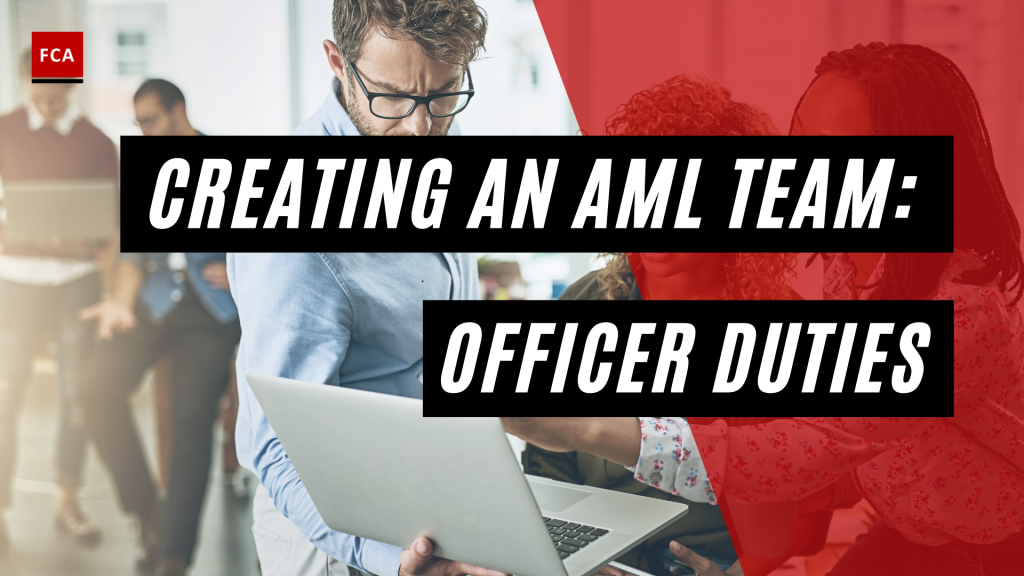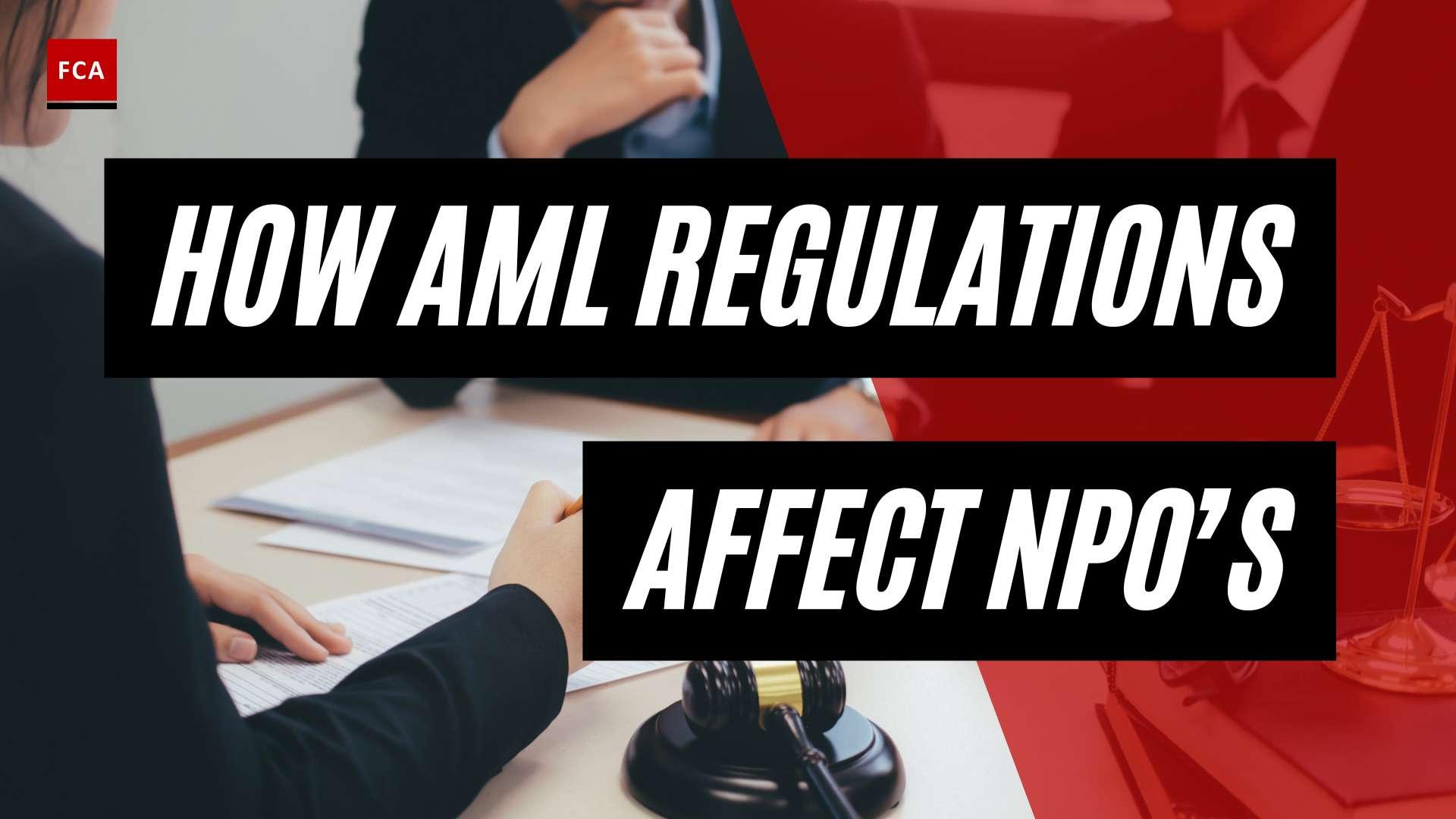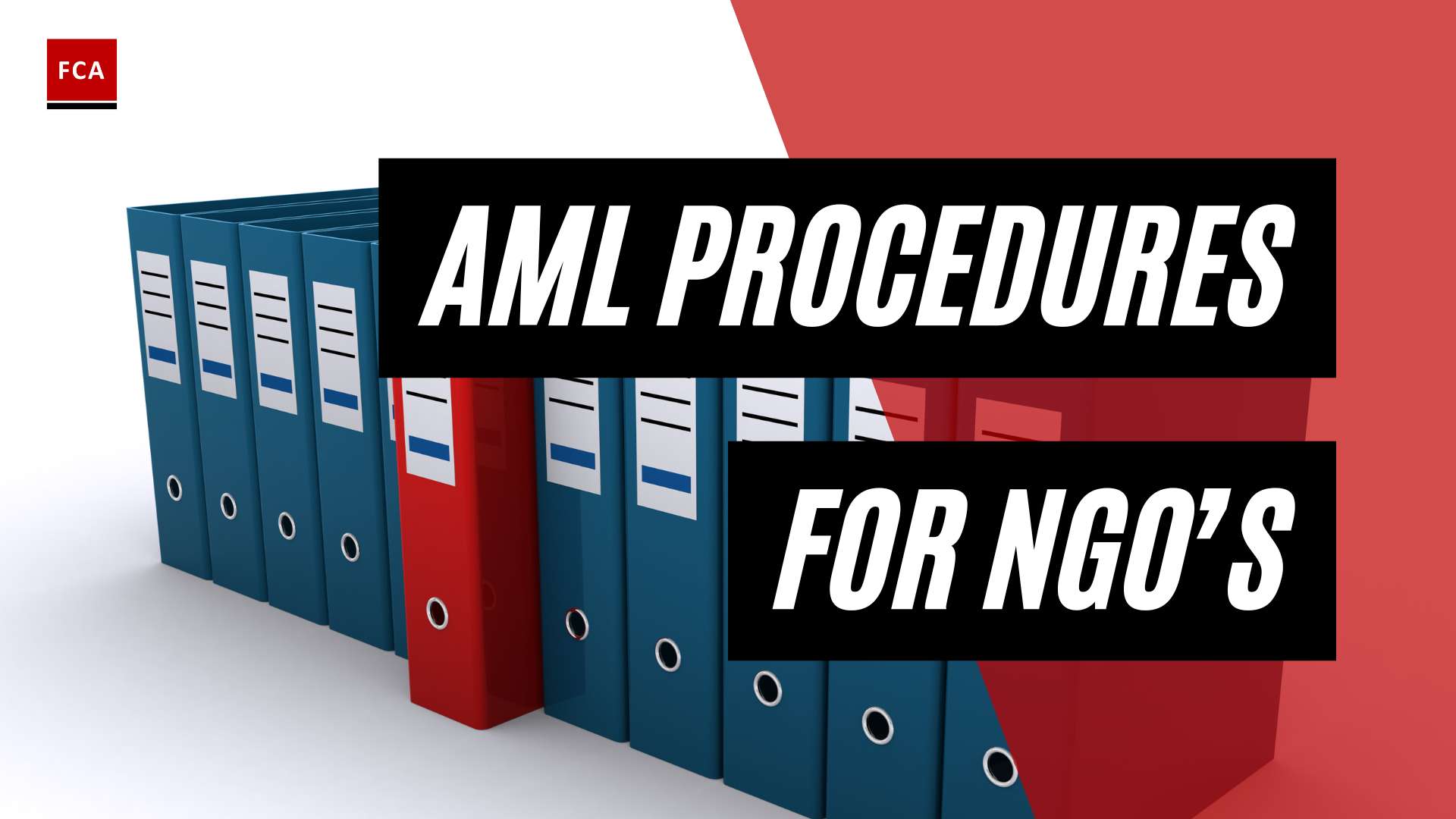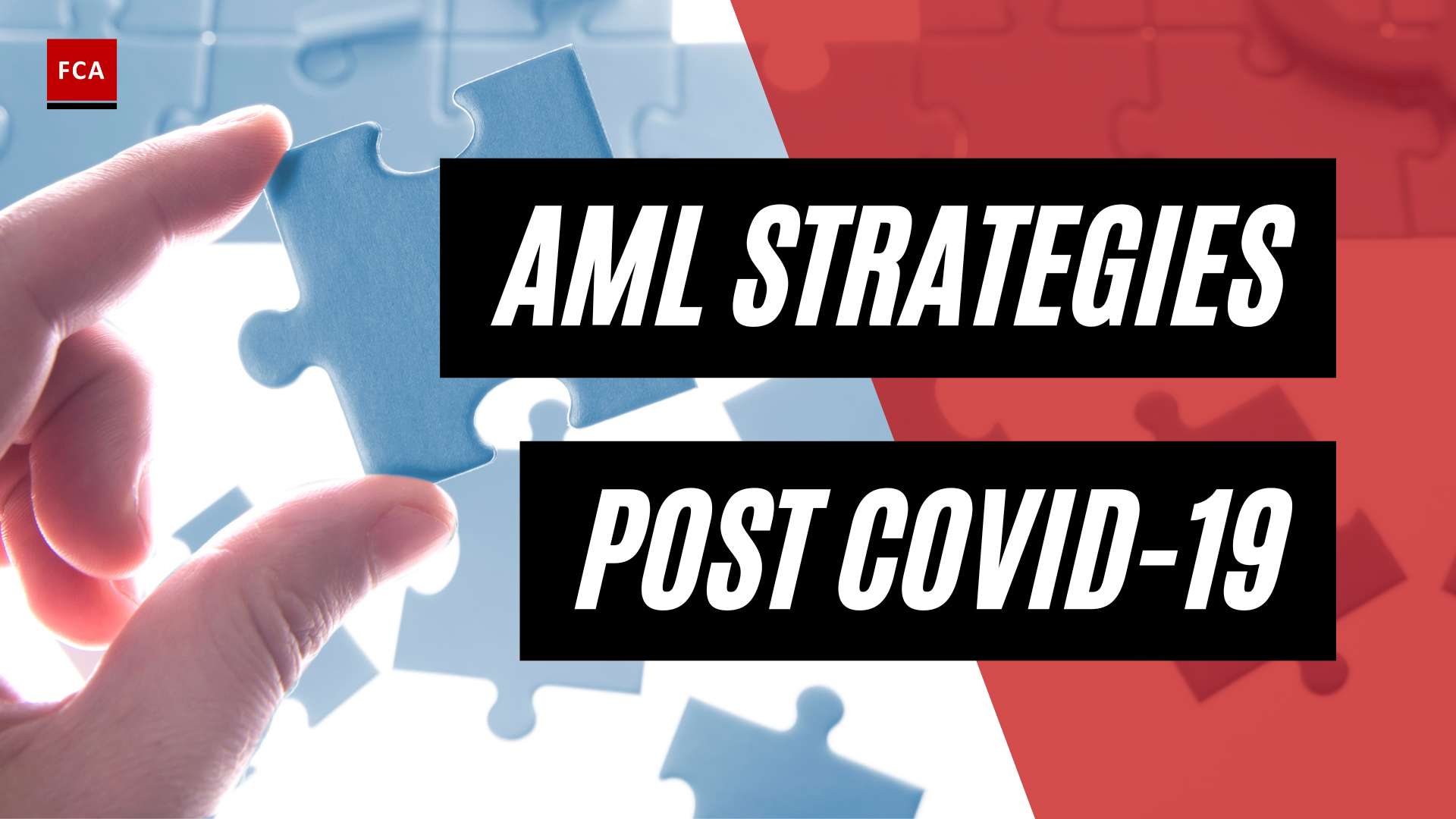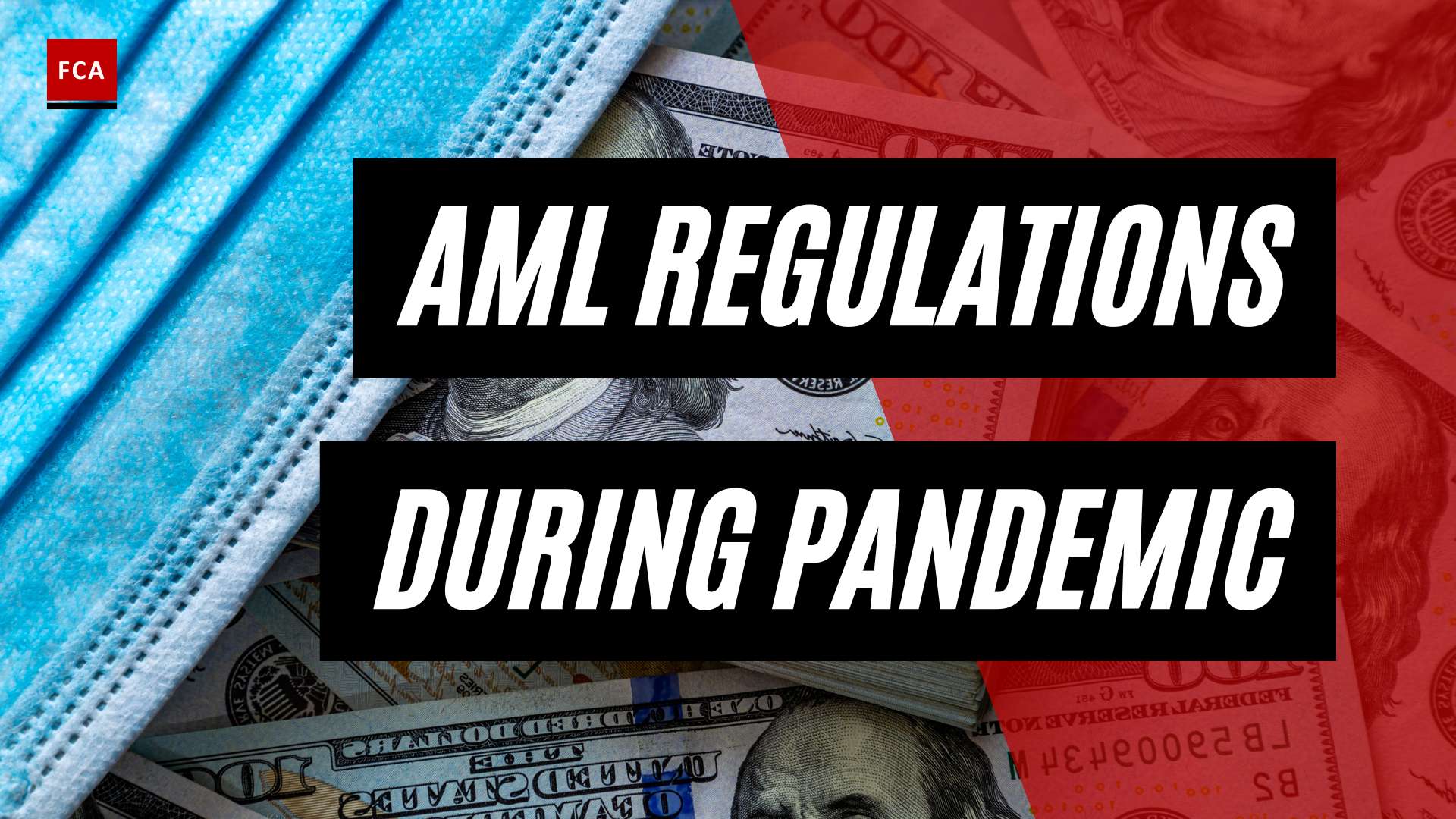In today’s global financial landscape, the fight against money laundering and other financial crimes has never been more crucial. Banks and financial institutions face increasing scrutiny from regulators, and the penalties for non-compliance can be severe. Enter the AML team: a dedicated group of professionals who work tirelessly to ensure regulatory compliance and safeguard the integrity of the financial system. In this blog post, we will delve into the roles and responsibilities of the AML team, explore strategies for building a cohesive and effective team, and examine the latest trends and developments in anti-money laundering regulations and technology.
Key Takeaways
Form an AML team to comply with Bank Secrecy Act, Anti-Money Laundering Regulations and other applicable laws.
Each team member has specific roles and responsibilities including the Compliance Officer who supervises policies & operations. Investigators for due diligence & transaction monitoring. Technical Specialists for implementation of industry standards.
Establish clear communication lines, invest in training/development opportunities, promote a culture of compliance through support/training to combat financial crimes and maintain regulatory adherence.
Assembling Your AML Team: Key Roles and Responsibilities

The formation of an AML team is a significant move for financial institutions combating money laundering and other financial crimes. The team is responsible for ensuring compliance with the Bank Secrecy Act, Anti-Money Laundering (AML) regulations, and other applicable laws, thereby protecting the financial system from being exploited by money launderers and terrorist financiers.
This is a critical step as these professionals are the first line of defense in the fight against financial crimes. Their role is not only to ensure compliance but also to actively monitor and analyze financial transactions, looking for any signs of suspicious activity that might indicate money laundering or other illicit financial activities. They work in a high-stakes environment where their vigilance and expertise directly contribute to the security and integrity of the financial sector. The formation of an AML team is therefore a clear demonstration of a financial institution’s commitment to upholding high ethical standards and maintaining public trust.
The AML team primarily consists of the AML Compliance Officer, Compliance Investigators, and Technical Compliance Specialists. Each of these professionals plays a vital role in maintaining regulatory compliance and preventing financial crimes. The following subsections will provide more detailed insights into the specific roles and responsibilities of each team member.
AML Compliance Officer
The AML Compliance Officer, as the cornerstone of the AML team, supervises the institution’s AML policies, procedures, and operations, ensuring compliance with relevant laws and regulations. With extensive experience and understanding of the financial and regulatory environment, the Compliance Officer is well-equipped to address the myriad risks associated with money laundering and financial crimes.
Beyond their supervisory role, the AML Compliance Officer is also responsible for maintaining customer relationships in compliance with AML regulations and ensuring that the organization meets its regulatory obligations. The Compliance Officer’s independence is vital, enabling them to pursue compliance objectives without interference from the company’s business lines, thereby maintaining the highest standards of integrity and professionalism.
Compliance Investigators
Compliance Investigators have a crucial role in detecting and reporting suspicious activities potentially indicative of money laundering or other financial crimes. They are responsible for conducting ongoing customer due diligence, verifying the identity of prospective clients, and maintaining compliance with regulatory requirements.
One key aspect of their role is adherence to the “Know Your Customer” (KYC) principle, which involves collecting and verifying client information upon account opening and conducting ongoing customer due diligence. In addition, they are tasked with transaction monitoring, identifying potential criminal activities, and reporting them to the relevant authorities. Compliance Investigators are also responsible for escalating and reporting “large” transactions that meet certain thresholds as mandated by the relevant jurisdiction.
Technical Compliance Specialists
Technical Compliance Specialists:
Ensure organizations’ compliance with relevant industry standards and regulations
Scrutinize technical aspects and product compliance standards in newly regulated markets
Formulate solutions for these markets
Act as a liaison between the organization and regulatory authorities
Automate and optimize compliance processes
Enhance internal security controls
Perform routine security-related inspections
Respond to external security queries
Their expertise is instrumental in ensuring compliance and maintaining security within organizations.
Building a Cohesive AML Team: Strategies for Success

Creating a cohesive and effective AML team involves more than simply bringing together a group of qualified professionals. To ensure success, organizations must establish clear lines of communication, invest in ongoing training and development, and foster a culture of compliance. This process begins with the careful selection of team members who possess the necessary skills, experience, and dedication to the cause. An effective AML team is one that understands the complexities of financial regulations, can adapt to the ever-changing landscape of financial crime, and is committed to safeguarding the integrity of the organization’s financial systems. This team should also be able to work collaboratively, share knowledge and ideas freely, and support each other in their roles. By building such a team, organizations can greatly enhance their ability to combat financial crimes and maintain regulatory compliance.
Focusing on these strategies allows the AML team to collaborate effectively, maintaining regulatory compliance and combating financial crimes efficiently.
Establish Clear Lines of Communication
For efficient decision-making and problem-solving, clear and open communication within the AML team and with senior management is necessary. By establishing a communication protocol and ensuring that all team members are aware of and adhere to it, organizations can facilitate effective collaboration and the prompt and accurate sharing of information.
Clear lines of communication also allow for the escalation of alerts and cases to triage teams, enabling swift action and decision-making. Furthermore, direct communication between the AML Compliance Officer and the board of directors ensures transparency and accountability.
Lastly, having easily accessible past data for analysis of previous and related financial transactions can significantly improve the effectiveness of transaction monitoring, especially in identifying suspicious transactions.
Invest in Ongoing Training and Development
Continual investment in training and development for AML team members is vital to stay abreast of the latest regulations and industry best practices. By providing opportunities for continuous learning, organizations can ensure that their team members are well-equipped to recognize and address potential risks and issues before they escalate. This can be achieved through a variety of methods such as regular workshops, seminars, and online courses that focus on the latest trends and updates in the AML landscape. Additionally, organizations can also consider bringing in industry experts for specialized training sessions, or even partnering with universities for more formal educational programs. This ongoing commitment to professional growth and development not only enhances the skills and knowledge of the AML team but also boosts their morale, motivation, and job satisfaction, leading to improved performance and productivity.
Training and development options can include:
Online courses
Seminars
Workshops
Conferences
By participating in these learning opportunities, AML team members can enhance their knowledge and understanding of AML compliance, as well as learn about emerging trends and best practices in the field.
Foster a Culture of Compliance
For the AML team’s success, it’s necessary to cultivate a compliance culture within an organization. By promoting an environment that prioritizes regulatory adherence and encourages employees to proactively report potential issues, organizations can prevent deficiencies, enhance risk assessment, and ensure the early recognition of compliance issues.
Building such a culture is not an overnight task. It requires consistent efforts from the top-level management down to the newest employee. It is about creating an environment where compliance is seen as a shared responsibility and where every employee understands the importance of their role in maintaining regulatory adherence. This includes providing regular training and updates on AML regulations and policies, rewarding compliant behavior, and treating any violation seriously.
A strong compliance culture is not just about avoiding penalties and fines. It also helps in building a positive reputation with regulators, clients, and the public. It demonstrates the organization’s commitment to ethical practices and to ensuring the integrity of the financial system. Ultimately, a strong culture of compliance can be a powerful tool in the fight against financial crimes.
Fostering a culture of compliance can be achieved through clear communication, ongoing training and development, and the implementation of a comprehensive AML compliance program. By consistently reinforcing the importance of compliance and providing the necessary resources and support, organizations can empower their AML team members to effectively prevent and address financial crimes.
AML Compliance Officer Salary and Costs

Factors such as educational qualifications, experience, and the company’s size and industry can influence the salary of an AML Compliance Officer. In the United States, salaries range from $53,850 to $169,940, with a median salary of $104,850. It is important for organizations to recognize the value of investing in skilled and experienced AML Compliance Officers, as their expertise can significantly contribute to the success of an organization’s AML program.
In addition to salaries, organizations should consider the cost savings and efficiency gains that can be achieved by investing in AML software. By automating and streamlining compliance processes, organizations can enable non-technical personnel to perform complex tasks, allowing the Compliance Officer to work independently and productively with accurate results.
Implementing a Comprehensive AML Compliance Program
Organizations aiming to effectively combat financial crimes and maintain regulatory compliance need a comprehensive AML compliance program. The program should encompass policies, procedures, and strategies to ensure adherence to domestic and international regulations related to anti-money laundering.
To establish a risk-based AML strategy, organizations should:
Identify and assess the risks associated with their business
Develop and implement policies and procedures to mitigate those risks
Monitor and review the compliance efforts
By implementing a comprehensive AML compliance program, organizations can effectively manage money laundering risks and maintain compliance with applicable laws and regulations.
Conduct Risk Assessments
Risk assessments form a vital part of a successful AML compliance program. By identifying potential vulnerabilities and areas of non-compliance, organizations can target improvements and ensure that their AML program is effective and up-to-date.
The process of conducting risk assessments involves identifying potential risks, evaluating the probability and impact of those risks, and devising risk based procedures to mitigate them. By regularly monitoring and reviewing risk assessments, organizations can ensure the success of their risk assessment process and account for any changes in the environment.
Develop and Implement AML Policies
For organizations aiming to prevent and address financial crimes, developing and implementing AML policies is imperative. AML policies provide guidance on how to identify, assess, and mitigate money laundering risks, as well as how to report any suspicious activity.
The scope of AML policies should cover all aspects of the organization that are subject to AML regulations. Essential components of AML policies include risk assessment, customer due diligence, transaction monitoring, and reporting. To implement and monitor AML policies, organizations should provide training, internal controls, and periodic reviews.
Monitor and Review Compliance Efforts
To ensure the effectiveness and up-to-date nature of an AML compliance program, regular monitoring and review of compliance efforts are necessary. By evaluating the program’s performance and identifying any deficiencies or discrepancies, organizations can make necessary adjustments to ensure compliance with regulations.
The process of monitoring and reviewing compliance efforts involves:
Regularly evaluating the effectiveness of the AML compliance program
Identifying any deficiencies or disparities
Making necessary adjustments to ensure compliance with regulations
This ongoing process of ongoing monitoring helps organizations maintain compliance and adapt to the ever-changing regulatory landscape.
Regulatory Landscape: Current and Emerging AML Laws and Regulations
The AML regulatory landscape is in constant flux, with the introduction of new laws and regulations to tackle emerging risks and trends in financial crime. Organizations must stay informed of these developments to ensure ongoing compliance and avoid costly penalties.
Current AML laws and regulations in the United States include the Bank Secrecy Act (BSA) and the Anti-Money Laundering Act of 2020 (AMLA). These laws are designed to address money laundering and the financing of terrorism through the imposition of reporting and record-keeping obligations on banks and financial institutions.
Leveraging Technology for AML Compliance
The use of technology for AML compliance can markedly enhance an organization’s efficiency, accuracy, and effectiveness in detecting and preventing financial crimes. By utilizing advanced software and tools, organizations can automate and streamline compliance processes, enabling AML teams to focus on more strategic tasks and decision-making.
Recent trends in AI-based AML solutions have seen banks and financial institutions embracing advanced technology to manage AML compliance more efficiently. By adopting cutting-edge tools and techniques, organizations can stay ahead of the curve in the fight against financial crimes and maintain a robust and compliant AML program.
Summary and Conclusion
To conclude, the formation of a well-structured AML team, implementation of a comprehensive compliance program, and use of the latest technology are key elements in combating financial crimes. By investing in these areas, organizations can effectively combat money laundering and maintain regulatory compliance, safeguarding the integrity of the financial system and protecting their reputations.
As the regulatory landscape continues to evolve, staying informed and adapting to changes will be essential for ongoing success in the world of anti-money laundering.
Frequently Asked Questions
This section addresses five common questions related to AML teams, their roles and responsibilities, and the significance of AML monitoring officers in upholding compliance. These questions and answers provide further insights into the subject matter discussed throughout this blog post.
What is your understanding of the AML team responsibilities?
Question: What is your understanding of the AML team responsibilities?
AML team responsibilities include:
Monitoring transactions for potential suspicious activity
Formulating and executing AML policies
Executing risk assessments
Staying informed of current and emerging AML laws and regulations
Their goal is to ensure compliance with anti-money laundering regulations, report suspicious transactions, and prevent financial crimes, including terrorist financing.
What is the AML team in banking?
Question: What is the AML team in banking?
Answer: The AML team in banking is a collective of professionals responsible for ensuring compliance with anti-money laundering regulations within a financial institution. Their duties include conducting ongoing customer due diligence, verifying the identity of prospective clients, and maintaining compliance with regulatory requirements.
What are your everyday responsibilities regarding AML compliance?
Question: What are your everyday responsibilities regarding AML compliance?
Everyday responsibilities regarding AML compliance include:
Identifying money laundering risks
Executing risk assessments
Formulating and executing AML policies
Supervising and analyzing compliance efforts
Utilizing technology for AML compliance.
What is the role of AML monitoring officer?
Question: What is the role of AML monitoring officer?
The role of an AML monitoring officer includes:
Ensuring that an organization complies with government or international regulations concerning anti-money laundering
Overseeing and managing confidential financial data
Enhancing internal security protocols
Conducting periodic security assessments
Reporting any suspicious activity

